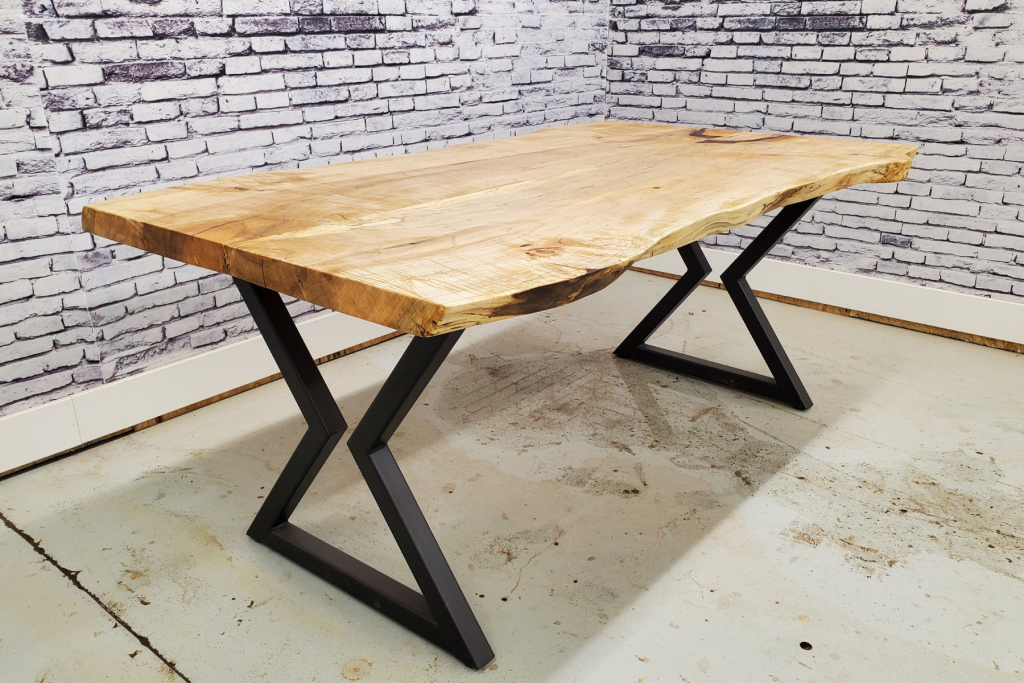Tailor Your Table with Unique Dining Table Legs Wood Creations
Tailor Your Table with Unique Dining Table Legs Wood Creations
Blog Article
Discovering the Various Kinds Of Dining Table Legs Timber for Your Dining Space
The option of eating table legs timber can exceptionally impact both the aesthetic and functional top qualities of your eating area. Solid wood choices, such as oak and walnut, give a traditional appearance with unequaled longevity, while crafted wood alternatives supply ingenious styles that simulate the splendor of all-natural grains.
Solid Timber Options

Unlike engineered materials, solid timber is less prone to warping and damage over time when appropriately maintained. Each piece of solid wood is special, showcasing specific features that include to the appeal and character of the eating table.
Additionally, strong timber can be completed in many methods, ranging from all-natural oils to tarnished coatings, enabling home owners to individualize their furnishings to match their decoration. In summary, selecting strong timber for dining table legs not just makes sure structural integrity yet additionally improves the visual allure of the dining location, making it a beneficial investment for any home.
Engineered Timber Alternatives

Plywood, created from several layers of wood veneer, is specifically solid and stable, making it an exceptional option for eating table legs. Its layered make-up enables it to withstand adjustments in humidity and temperature level better than typical solid wood. MDF, on the various other hand, provides a smooth surface area for painting or veneering, allowing developers to accomplish a sleek look while keeping structural stability.
When picking engineered timber alternatives, it is crucial to think about the desired use and preferred visual. These materials not only boost the capability of eating rooms but also enable for higher style versatility, making sure that modern and traditional designs can coexist sympathetically.
Reclaimed Timber Features
Recovered wood offers a distinct blend of sustainability and personality, making it a significantly preferred option for dining table legs. Sourced from old barns, factories, and various other frameworks, recovered wood personifies a background that new materials simply can not duplicate. Each piece carries its very own tale, marked by distinct blemishes, knots, and differing grain patterns, which add to a table's distinct aesthetic allure.
Along resource with its visual appeal, reclaimed timber is an eco friendly option. By repurposing formerly used products, it minimizes the demand for brand-new lumber, therefore helping to minimize and save woodlands waste. This aligns with an expanding consumer choice for lasting practices in furnishings.
Additionally, reclaimed wood is commonly much more sturdy than recently collected wood as a result of its age. The natural drying out process that recovered timber goes through outcomes in a denser and stronger product, making it much less vulnerable to bending and splitting. This enhances the long life of dining tables, enabling them to withstand the roughness of daily usage.
Softwood vs. Hardwood
When picking eating table legs, understanding the differences between softwood websites and wood is essential for accomplishing both visual and practical goals. They commonly exhibit a more rustic appearance, making them suitable for country-style or laid-back eating areas.
On the other hand, woods, sourced from deciduous trees like oak, cherry, and maple, are renowned for their thickness, toughness, and resilience. The complex grain patterns and abundant hues of woods provide a ageless and sophisticated charm, making them ideal for formal eating setups. While woods often tend to be more expensive and heavier, their resilience versus damage typically validates the investment.
Inevitably, the selection between softwood and wood for dining table legs ought to straighten with your layout vision, usage needs, and spending plan, making certain that your eating space mirrors your personal design while staying functional with time.

Therapies and surfaces
The aesthetic appeal and longevity description of eating table legs can be dramatically boosted via numerous finishes and therapies. These procedures not just safeguard the wood from damage yet likewise raise its appearance, allowing it to enhance varied interior designs.
One typical treatment is staining, which passes through the timber and improves its natural grain while including shade. Spots supply an abundant, sophisticated appearance, allowing property owners to match their furniture with existing style. Alternatively, clear finishes such as polyurethane or varnish develop a protective layer without altering the timber's original tone, making sure longevity against wear and tear.
In addition, natural oils, like tung or linseed oil, nurture the wood and supply a subtle luster, all while being green. These oils enable the surface to take a breath, preventing dampness buildup and possible warping.
For those looking for a rustic charm, troubled or weather-beaten finishes can be related to create an aged look, including character to the piece. Inevitably, the choice of therapies and coatings depends on individual choice, desired aesthetics, and the certain timber type, making it vital to consider these aspects when picking table legs for your room.
Conclusion
Solid woods, engineered alternatives, and reclaimed alternatives each deal distinctive benefits, catering to different preferences and needs. Ultimately, the selection of wood kind need to line up with preferred style, sturdiness, and environmental considerations, enhancing the overall eating experience.
The choice of eating table legs timber can greatly influence both the visual and practical top qualities of your eating area - Dining Table Legs Wood. Solid timber choices, such as oak and walnut, supply a traditional look with unmatched durability, while crafted wood alternatives supply ingenious styles that mimic the splendor of natural grains. Solid timber offers a timeless top quality that can raise the overall layout of a dining space. Each item of solid timber is distinct, showcasing specific attributes that add to the beauty and character of the eating table
Moreover, reclaimed timber is typically more sturdy than recently collected wood due to its age.
Report this page